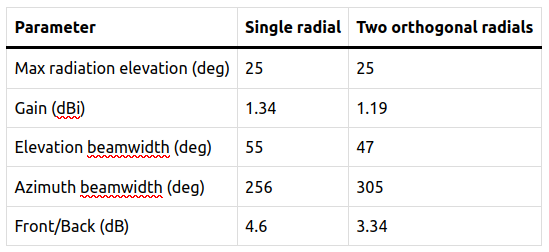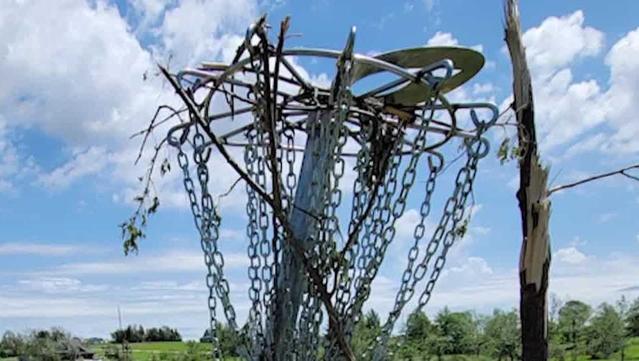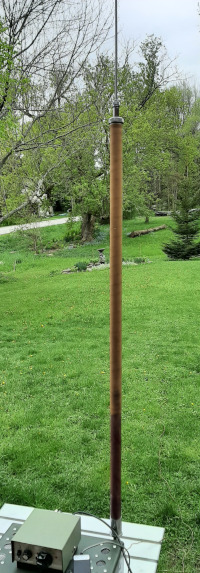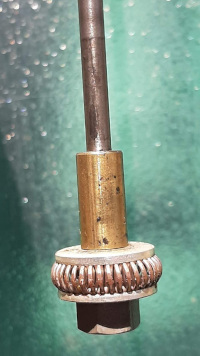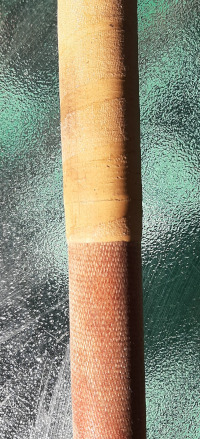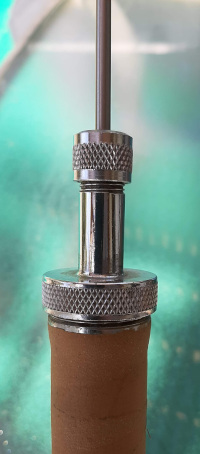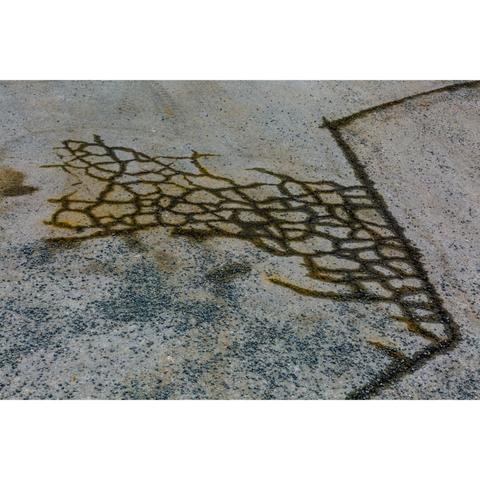#ground
Camera 📸: Sony ILCE-6000
Photo 1: f/5.6 | 1/1000sec | ISO500 | 50mm
Photo 2: f/4 | 1/1250sec | ISO100 | 23mm
#photography #foto #fotografie #naturfotografie #building #modern #green #urbangreen #flower #nature #naturephotography #architecture #architecturephotography #ground #beautiful #peaceful #calm #architektur #Polen #streetphotography #flower #flowers #colors #colours #colorful #colourful
© Jan Heisinen. All rights reserved.
Testing and modifying the “POTA PERformer” antenna
What is the POTA PERformer? Greg Mihran KJ6ER has introduced us to an antenna that he calls the “POTA PERformer”. The capitalized PER in its name is an abbreviation for “Portable, Elevated, Resonant”. But what is it really? The POTA PERformer is an adjustable elevated vertical radiating whip with two adjustable elevated radials. In concept there is nothing really new about it, but the unique implementation devised by KJ6ER is quite interesting.
Get up off the ground
Tripod mounted whip at Ham Radio Outside the BoxMost hams will be aware that a quarter wave vertical antenna, mounted on the ground, requires an extensive system of radials to be efficient. I have successfully used such an arrangement with as little as four radials during a POTA activation out in the Big Blue Sky Shack. But, as they say, even a poor antenna will get you contacts when conditions are right. Some recommend as many as 120 radials although anything over 16 provides very little further improvement. In a portable situation laying out a lot of radials for a short-term temporary station doesn’t make a lot of sense. So what is the alternative?
Less is more
If the base of the antenna is raised above the ground, fewer radials are needed to form an effective counterpoise and make the antenna efficient. How many? KJ6ER has settled on two radials for the POTA PERformer. If the radials are arranged at 90 degrees to each other the antenna has a directional radiating pattern. But using two radials increases the footprint on the ground and that could be an important consideration if, for example, we are operating on a narrow trail. Could we get away with just one radial? I modeled a POTA PERformer using EZNEC and came up with a comparison, shown in the following table.
TABLE: 1 radial versus 2 radials
Now I’ll admit that I am no expert in computer modeling, but the results I obtained seem to differ from what KJ6ER found. In either case, whether two radials or just a single radial are used, we have a directional antenna that can be rapidly deployed in the field.
One radial or two? Now here’s a surprise!
The original POTA PERformer is a multiband antenna. It covers all the bands from 20m up to 6m with a 17ft telescopic stainless steel whip and adjustable length radials. KJ6ER suggests extending the band coverage to 30m and 40m by means of a loading coil at the base of the whip and then … surprise … combining the two radials to create one long radial wire. I suspect the 30m/40m version may lack some of the gain and efficiency of the higher band version due to the losses involved in base loading a vertical radiator. Perhaps a full length vertical wire supported by a pole, or a tree, might be better.
I have always felt there is something incongruous about using a counterpoise that is longer than the radiator. Perhaps that concern is unfounded if we consider that a raised radial wire also radiates.
Customizing the original clever idea
I have tried the POTA PERformer with both a single radial and two radials. Both versions “worked” and I made contacts. It is difficult to interpret which was better, but my own preference – for field expediency – is a single radial. The 20m, 30m and 40m bands are my preferred haunts, only for the reason that two of my QRP radios do not support the higher bands. Even though the POTA PERformer is a great idea with very positive reports from several sources on YouTube and elsewhere, it doesn’t fit well with how I like to operate. Here is why.
Please remain seated
A raised radial wire is a tuned counterpoise. Its length is important. That means band changes involve adjusting the length of the radial(s). One way of doing this is to insert a non-conducting link in the wire and move it between linked sections to set the conducting part of the counterpoise to the correct length for the band of operation. The overall length remains the same but the sections of the wire not being used are isolated from the rest of the antenna. Another way that I have tried is to use a metal measuring tape and unwind it to the correct length. Perhaps using multiple raised radials where each wire is adjusted for a different band would also work. Whatever method is used, getting out of your chair and fiddling with radials and whip lengths is a time consuming distraction. So what’s the alternative; how can you stay in your seat and change bands?
Get on the ground and spread ’em!
Sacrificing a little efficiency is required but it can be done. My own method is to spread out four radials wires in a fan pattern on the ground, facing the direction I want my signal to go. Are four ground radials enough? If the vertical element is ground-mounted then using only four radials results in efficiency loss. But, if the whip is elevated? Who knows, but it works.
Since ground radials are detuned their length is not critical. No adjustment is required whether operating on 20m, 30m or 40m. The only requirement is that there is sufficient copper on the ground to provide a good counterpoise; I use 4x13ft radials. Orienting all the radials in one particular direction does improve the signal in that direction to a small extent. How much efficiency is lost? That is very hard to quantify but the convenience factor is high.
A 17ft whip with an adjustable loading coil (bypassed for 20m) will cover all three of the bands that I need. I have also used a 9ft “tactical” whip whose fixed length sections are held together with bungee cord. This shorter whip uses a separate loading coil for each band and is usually only employed with my QROp rig (a 100 watt radio that is usually set to 20 watts or less). This radio gives the ability to transmit a little more power when needed.
“QRP when possible, QROp when needed” – Ham Radio Outside the Box
Is there any real difference between 5 watts and 20 watts? Maybe not but it does give me a nice warm feeling – especially if I get too close to the antenna while keying up.
To better understand and learn more about the POTA PERformer it is worthwhile downloading and reading Greg KJ6ER’s PDF document. It may inspire you to build one or even devise your own variant to suit your unique operating needs.
Note to Fediverse readers: the formatting of this post may be presented better on the original WordPress site. Visit: https://hamradiooutsidethebox.ca/2025/05/27/testing-the-pota-performer-antenna/
Help support HamRadioOutsidetheBox
No “tip-jar”, “buy me a coffee”, Patreon, or Amazon links here. I enjoy my hobby and I enjoy writing about it. If you would like to support this blog please follow/subscribe using the link at the bottom of my home page, or like, comment (links at the bottom of each post), repost or share links to my posts on social media. If you would like to email me directly you will find my email address on my QRZ.com page. Thank you!
The following copyright notice applies to all content on this blog.
This work is licensed under a Creative Commons Attribution-NonCommercial-NoDerivatives 4.0 International License.
#AmateurRadio #Antennas #Counterpoise #Ground #OutdoorOps #Portable #POTA
Camera 📸: Sony ILCE-6000
Photo 1: f/5.6 | 1/640sec | ISO2000 | 50mm
Photo 2: f/5.6 | 1/2000sec | ISO320 | 50mm
#photography #foto #fotografie #naturfotografie #building #modern #green #urbangreen #flower #nature #naturephotography #architecture #architecturephotography #ground #beautiful #peaceful #calm #architektur #Polen #streetphotography #flower #flowers #colors #colours #colorful #colourful
© Jan Heisinen. All rights reserved.
Camera 📸: Sony ILCE-6000
Photo 1: f/5.6 | 1/1600sec | ISO160 | 50mm
Photo 2: f/5.6 | 1/3200sec | ISO1600 | 50mm
#photography #foto #fotografie #naturfotografie #building #modern #green #urbangreen #flower #nature #naturephotography #architecture #architecturephotography #ground #beautiful #peaceful #calm #architektur #Polen #streetphotography #flower #flowers #colors #colours #colorful #colourful
© Jan Heisinen. All rights reserved.
#photography #foto #fotografie #naturfotografie #nature #naturephotography #ground #beautiful #peaceful #calm #wald #winter #talvi #luonto
© Jan Heisinen. All rights reserved.
Work continues to restore Greenfield Disc Golf Course at Greenfield Lake https://www.rawchili.com/4276968/ #ability #age #auction #DiscGolfPlayer #golf #greenfield #GreenfieldDiscGolfCourse #GreenfieldLake #ground #Group #HenryUken #HomemadeBasket #hundred #Players #tornado #town #TreeCover
Reviving a Webster Band Spanner – a 1950s manual screwdriver antenna
About 20 years ago I was approached by a neighbor who, knowing that I am a ham, asked if I might be interested in looking at some of the old ham junque he had accumulated over many years. He was a fine gentleman, in his golden years, who was no longer active in the hobby. Hesitating for less than a microsecond I eagerly agreed. Among the treasures I acquired was a Signal Electric straight key. I believe it was an R48 model first introduced in 1920 when it sold for $2.80. But my prized acquisition was a Webster Band Spanner antenna.
The Band Spanner was produced in the 1950s and 1960s by the Webster company in San Francisco. It is a center-loaded manual screwdriver antenna intended for mobile operation. Unlike modern screwdriver antennas, like the popular Tarheels, that use an electric motor to make band changes, the Band Spanner has to be manually adjusted for each band by sliding the whip up and down.
Two models were produced; the A-61 and the A-62. The A-61 (that I acquired) has an extended length of 93 inches and a collapsed length of 60 inches. The longer A-62 model has an extended length of 117 inches and a collapsed length of 63 inches. Both models support the 75-40-20-15 and 10 meter bands. There is a mark on the whip indicating the mid-point of each band. I suspect the WARC bands could also be tuned although it would be necessary to locate the correct whip length by trial and error. The antenna is rated for “100 watts or more”.
Whip connection contact Coil section (top), lower radiating section (bottom)The Band Spanner is constructed from a fiberglass support column with a 24-inch long internal loading coil. At the base of the whip is a circular contactor that connects with the windings of the loading coil. As the whip is raised or lowered, the contactor connects to individual exposed turns of the loading coil inside the support column. This type of continuous adjustment permits exact resonance to be achieved anywhere within a band. It is a very high Q antenna – moving the whip just one click up or down (one turn of the loading coil) makes a significant difference to the tuning.
Would the vibration of a vehicle change the tuning?
Whip locking screwYou might expect that a bumper-mounted antenna would be subjected to a lot of stress as a vehicle crashed through pot-holes and other rough ground, but there is a very tight connection between the whip and the loading coil. The connection is so tight that it requires some force to adjust the whip length and it is quite possible to skip a turn if too much force is used. The tight connection has a another positive benefit – it makes the connection point self-cleaning. There is also a locking thumb screw at the base of the whip to help secure it in place.
Stationary mobile operation
Bumper mountI am not a mobile HF operator; there are enough distractions already to compromise driving safety, so I prefer to use the Band Spanner as a stationary mobile antenna. For those who do intend to use it as a mobile antenna, there is the H-200 ball mount (shown in picture).
I have tried several ways of mounting the Band Spanner as a temporarily fixed position portable antenna. The manufacturer suggests using a matching section of 21 feet of RG-8/U coax and grounding the shield of the coax to the vehicle body. I did once try using such a matching section with a Band Spanner on a tripod, but it didn’t seem to improve the tuning at all. Most recently I attached my Band Spanner to my “QROp” (5-100 watts) radio set. It is a Yaesu FT-891 mounted inside a mil surplus 50-cal ammo box. The Band Spanner was connected directly to the rear of the rugged steel case. My ham-made L-match tuner was used for fine adjustment of the SWR.
Ammo can radio set with FT-891 transceiver; ham-made L-match; CWMorse extruded aluminum paddles; Bioenno 12Ah LiFePO4 battery in canvas pouch (left of picture) and Webster Band Spanner antenna attached at rear.Tuning was fairly easy. I set the radio to 20m and 5 watts power output. I threw a 17ft wire counterpoise on the ground behind the radio. A single wire counterpoise is not really sufficient ground for this antenna so additional inductance had to be added via the L-match. I would usually lay out at least 4 radials for a portable vertical antenna, but I was on a mission. I wanted to find out if the Band Spanner could be employed as the radiating element of a “POTA PERformer” type of antenna. Ham Radio Outside the Box will be exploring the “POTA PERformer” in more detail in an upcoming post. For now we can describe it as simply a raised quarter wave whip with raised tuned radials.
Now comes the surprise
Having tuned the antenna with one ground radial to less than 1.5:1 SWR I thought I was on a roll. Next step, I raised the radial so that it would not be detuned by contact with the ground. I now had the Band Spanner set for the 20m band, finely adjusted by means of the L-match to give a good SWR. I expected some further adjustment might be necessary with a raised 17ft counterpoise, so imagine my dismay when the radio flashed its “high SWR” warning.
The Band Spanner is intended to be used while mounted to a couple of tons of steel vehicle serving as its counterpoise. It is a very short, loaded vertical antenna with very high Q performance. A lesson I learned early in my ham career, but overlooked in this exercise, was that a short-loaded, high Q vertical whip requires a carefully tuned counterpoise – or a good ground. Simply using a raised 17ft wire isn’t good enough. I would have had to precisely trim the raised radial wire to get a good SWR. To make this even more complicated, a precisely trimmed radial wire counterpoise for each band would be required. So the mission objective to examine the Band Spanner’s suitability as a portable POTA PERformer was concluded. In future, the Band Spanner will be used with the best ground system I can erect during a temporary field installation.
Another thought …
A Band Spanner (or even better – a motorized screwdriver antenna) could possibly be used in an HOA situation. If it were ground mounted, with a good system of buried radials, it could potentially be disguised to prevent detection by the HOA hounds.
And finally …
I am not sure of the actual age of my Webster Band Spanner. They were produced in the 1950s and 1960s so I estimate it to be at least 60 and maybe as much as 75 years-old. The bumper mount has entirely lost its plating and is now a dull rust color. The fiberglass support column is equally dull and has lost its identifying markings. But, the antenna still functions as the Webster company intended all those years ago, which is more than can be said for its owner who is of the same vintage!
Help support HamRadioOutsidetheBox
No “tip-jar”, “buy me a coffee”, Patreon, or Amazon links here. I enjoy my hobby and I enjoy writing about it. If you would like to support this blog please follow/subscribe using the link at the bottom of my home page, or like, comment (links at the bottom of each post), repost or share links to my posts on social media. If you would like to email me directly you will find my email address on my QRZ.com page. Thank you!
The following copyright notice applies to all content on this blog.
This work is licensed under a Creative Commons Attribution-NonCommercial-NoDerivatives 4.0 International License.
#AmateurRadio #Antennas #BandSpanner #Counterpoise #Ground #OutdoorOps #Portable #POTA
#Trondheim #Norway #artbyaccident #lines #pattern #minimalism #minimalistic #monochrome #mutedcolors #decay #meaningless #dirty #ground #debris
Ihana kuva suomalaisesta metsästä ja taivaasta.
Camera 📸: Sony ILCE-6000
f/4.5 | 1/800sec | ISO100
#photography #foto #fotografie #naturfotografie #nature #naturephotography #ground #beautiful #peaceful #calm #wald
© Jan Heisinen. All rights reserved.
After winning the lottery, Mavs fandom is on shaky ground. But it doesn’t have to be https://www.rawchili.com/nba/34856/ #after #Basketball #be #BeyondBasketball #but #Dallas #DallasMavericks #DallasMavericks #doesn #fandom #FrontPage #ground #have #is #it #lottery #mavericks #MavericksFeaturesProfiles #mavs #moneyball #NBA #on #shaky #t #the #To #winning
Camera 📸: Nikon D3100
f/4.5 | 1/8sec | ISO3200
#photography #foto #fotografie #building #modern #ground #beautiful #peaceful #calm #Polen #streetphotography #hostile #Warschau #longexposure #portrait #portraitphotography #dreamy
© Jan Heisinen. All rights reserved.
Camera 📸: Sony ILCE-6000
f/8 | 0.8sec | ISO200
#photography #foto #fotografie #naturfotografie #building #modern #green #architecture #architecturephotography #ground #beautiful #peaceful #calm #architektur #Polen #streetphotography #hostile #Warschau #longexposure
© Jan Heisinen. All rights reserved.
Camera 📸: Sony ILCE-6000
f/5 | 1/4000sec | ISO500
#photography #foto #fotografie #naturfotografie #building #modern #green #urbangreen #flower #nature #naturephotography #architecture #architecturephotography #ground #beautiful #peaceful #calm #architektur #Polen #streetphotography
© Jan Heisinen. All rights reserved.
Camera 📸: Sony ILCE-6000
#photography #foto #fotografie #naturfotografie #building #architecture #architecturephotography #ground #beautiful #peaceful #calm #architektur #Polen #streetphotography
© Jan Heisinen. All rights reserved.
Camera 📸: Sony ILCE-6000
#photography #foto #fotografie #naturfotografie #building #modern #green #urbangreen #flower #nature #naturephotography #architecture #architecturephotography #ground #beautiful #peaceful #calm #architektur #Polen #streetphotography
© Jan Heisinen. All rights reserved.
Camera 📸: Sony ILCE-6000
#photography #foto #fotografie #naturfotografie #building #architecture #architecturephotography #ground #beautiful #peaceful #calm #architektur #Polen #streetphotography
© Jan Heisinen. All rights reserved.
“He lost himself in what the untold years had done, the ablation of molecules and lives, layers and layers ground to fine dust.”
#ablation #ApocalypticDystopian #book #civilization #done #dystopianFiction #fiction #fineDust #ground #HughHowey #IntraterrestresRomansNouvellesEtc #layers #lives #lostHimself #molecules #mystery #PopularFiction #postApocalypticScienceFiction #quote #revolutions #RevolutionsFiction #ReVolutionsRomansNouvellesEtc #ScienceFiction #ScienceFictionAdventures #Sheriffs #SheriffsFiction #ShérifsRomansNouvellesEtc #Silo #subterranean #SubterraneanFiction #ThrillersCrime #UndergroundAreas #UndergroundAreasFiction #untoldYears #ZonesSouterrainesRomansNouvellesEtc
#Ranta Hangossa.
Camera 📸: Sony ILCE-6000
f/5 | 1/1250sec | ISO100
#photography #foto #fotografie #naturfotografie #nature #naturephotography #ground #beautiful #peaceful #calm #strand #Finnland
© Jan Heisinen. All rights reserved.
https://www.fogolf.com/959812/golf-swing-secret-ground-connection-power-stability/ Golf Swing Secret: Ground Connection = Power & Stability! #CONNECTION #Golf #GolfSkills #GolfSkillsVideos #GolfSkillsVlog #GolfSkillsYouTube #GolfStance #GolfStanceVideos #GolfStanceVlog #GolfStanceYouTube #Ground #power #Secret #Stability #Swing



